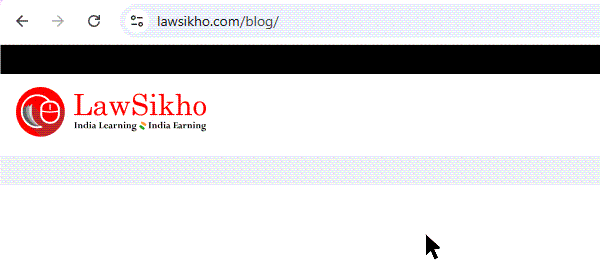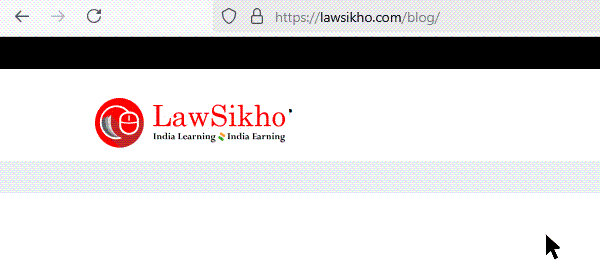In this article, you will learn everything about Supreme Court Judicial Clerkship Salary. From the monthly remuneration breakdown, actual in-hand pay, Delhi expenses, savings, and also why clerkship beats firm packages.
Table of Contents
Imagine working directly with a Supreme Court Judge, assisting in drafting judgments that shape Indian law, and building a network at the apex of India’s judiciary, all in your first year after law school.
Sounds incredible, right? But there’s one question stopping you: What about the money?
Let’s be honest, when you see your batchmates land a ₹15 lakh package in some big law firm, that ₹80,000 monthly remuneration might seem modest to you. Your parents might worry. Your friends might question your choice. You might also wonder if you’re making a financially sound decision.
But here’s the thing that no one will tell you that it’s not just about the monthly salary. It’s about what that one year does for the next thirty years of your legal career.
Here’s what I’m going to do in this guide: I’ll break down exactly what that ₹80,000 means for your life in Delhi. Not just the number on paper, but what actually lands in your bank account after taxes. What your rent will cost. Whether you’ll survive on Maggi or actually eat proper meals.
More importantly, I’ll show you why judging clerkship purely on monthly income misses the bigger picture, the professional credibility, judicial training, networking opportunities, and career doors that open years later.
What is the Salary of a Supreme Court Law Clerk?
Monthly Consolidated Remuneration of ₹80,000
As a law student considering your first professional opportunity after graduation, you’ll want to know exactly what you’ll earn as a Supreme Court law clerk. The current scheme approved by Chief Justice Dr. DY Chandrachud provides a consolidated monthly remuneration of ₹80,000 for the initial 12-month assignment term. This represents your complete monthly compensation with no separate components for housing, travel, or medical expenses.
This fixed remuneration structure was implemented through the revised scheme in 2023, marking a significant 60% increase from the previous ₹50,000 level. The ₹80,000 monthly remuneration applies uniformly to all law clerks during their first year, whether you’re working in a Justice’s chambers or assigned to the Registry. What makes this particularly straightforward is that your in hand salary remains predictable throughout your term, allowing you to plan your finances effectively during your Delhi tenure.
Extended Term Increase to ₹90,000 Per Month
If your performance satisfies the Judge you’re assigned to and you receive an extension beyond the initial 12-month period, your monthly remuneration increases to ₹90,000. This ₹10,000 raise recognizes your gained experience and continued contribution to judicial work. Extensions are granted at the Judge’s discretion based on your research quality, drafting capabilities, and overall professional conduct during your first year.
What does “Consolidated Remuneration” mean for a Supreme Court Law Clerk?

No Allowances or Other Benefits
When you see “consolidated remuneration” in the Supreme Court scheme, this means your ₹80,000 monthly payment is all-inclusive. You won’t receive separate allowances for house rent, dearness adjustments, transport, medical expenses, or any other perquisites that regular government employees typically get.
The official notification explicitly states “there will be no other allowances/perquisites,” which differs significantly from permanent judicial positions or government jobs under pay commission structures that include multiple allowance components.
The consolidated nature simplifies your salary but also means you need to manage all living expenses from this single monthly amount. There’s no additional accommodation allowance, even though you’ll likely need to rent housing in Delhi, no medical reimbursement for health expenses, and no transport allowance despite daily commuting to the Supreme Court. What you receive in your bank account each month is your complete compensation package for your clerkship services.
How has the Supreme Court Judicial Clerkship Remuneration Scheme been revised?
Salary Revisions of Supreme Court Law Clerk
Early Years: ₹25,000 per month (2010)
In 2010, the Supreme Court raised law clerk stipends from ₹20,000 to ₹25,000 per month, marking the early recognition that competitive compensation was needed to attract quality law graduates. This represented a significant 25% increase from the previous ₹20,000 level, though many top law school students still viewed it as modest compared to emerging law firm packages that were reaching ₹10-12 lakhs annually even then.
Mid Period Growth: ₹50,000 per month (2018)
A major revision came in 2018 under Chief Justice Dipak Misra’s tenure, when the monthly stipend doubled from ₹30,000 to ₹50,000. This substantial 67% increase acknowledged that Delhi’s living costs had risen dramatically since the previous revision, and that law clerks were struggling to sustain themselves on the earlier amount. The 2018 scheme also introduced a differentiated rate of ₹55,000 for clerks whose assignments extended beyond the initial year, recognizing their enhanced value through experience.
Recent Major Revision: ₹80,000 per month (2023)
The current remuneration of ₹80,000 monthly came through the revised scheme approved by Chief Justice Dr. DY Chandrachud in 2023, representing a 60% increase from the 2018 level. This brought Supreme Court law clerk compensation to a level genuinely competitive with many entry-level legal positions. The 2023 revision maintained the differentiated structure with ₹90,000 for extended terms, demonstrating the Supreme Court’s commitment to both attracting talented fresh graduates and retaining clerks who prove their capabilities.
Key Factors: Revision of the Remuneration of Supreme Court Law Clerk

Rising Living Costs in Delhi
Delhi’s status as the capital and a major metropolitan hub means living expenses have increased substantially over the past 15 years. Law clerks coming from different parts of India need to arrange accommodation near the Supreme Court, and rental costs in central Delhi localities have risen dramatically. A 2019 representation by Delhi High Court law clerks documented that they were spending approximately ₹30,000 monthly just on accommodation, food, and transportation, nearly the entire Supreme Court stipend at that time.
Need to Attract Talented Law Graduates
The Supreme Court recognized that without competitive compensation, securing the brightest law graduates became increasingly difficult as top-tier law firms began offering packages of approximately ₹10-15 lakhs annually to fresh graduates. While clerkship offers unparalleled judicial exposure, many academically excellent students choose immediate financial stability with law firms over judicial learning experiences. The salary revisions aimed to make clerkship a financially viable option, not just a prestigious but financially challenging choice that only students from economically comfortable backgrounds could afford.
What is the In Hand Salary for a Supreme Court Law Clerk?
Income Tax Implications on ₹9.6 Lakh Annual Income
Your ₹80,000 monthly stipend translates to ₹9.6 lakhs annual income, which falls within taxable brackets under the current Income Tax slabs. For income between ₹7 lakhs and ₹10 lakhs, you’ll pay 10% tax on the amount exceeding ₹7 lakhs, plus any applicable cess. This means approximately ₹27,000 annual tax liability on your ₹9.6 lakh income, though the exact amount depends on deductions you claim under Sections 80C, 80D, and others.
Tax Deducted at Source (TDS) procedures may vary since you’re on a contractual assignment rather than regular employment. The Supreme Court Registry handles your monthly payments, and depending on their accounting procedures, they may deduct TDS or you may need to pay advance tax quarterly. I’d recommend consulting with a chartered accountant familiar with contractual legal positions to understand your specific tax compliance requirements and potential savings through standard deduction and other exemptions available to you.
No Provident Fund or ESI Deductions
Unlike regular government employees or private sector workers, your law clerk’s compensation doesn’t include Provident Fund (PF) or Employee State Insurance (ESI) deductions. This means your gross monthly remuneration of ₹80,000 isn’t reduced by the typical 12% PF employee contribution (₹9,600 monthly) that salaried employees experience. While this increases your immediate take-home, it also means you’re not building any retirement corpus or social security benefits through your clerkship tenure.
Estimated Monthly In-Hand Salary of Supreme Court Law Clerk
After accounting for income tax liability of approximately ₹2,250 per month (₹27,000 annually divided by 12), your practical take-home from the ₹80,000 monthly remuneration would be around ₹77,750. Your actual in-hand amount might vary slightly based on whether TDS is deducted monthly or you pay advance tax quarterly, and what deductions you claim when filing your annual return.
Expenses of Supreme Court Law Clerk in Delhi: Budget Breakdown
Accommodation Costs Near Supreme Court (₹7,500 to over 60,000)
Accommodation will be your largest expense as a law clerk in Delhi. Renting a single room in localities near the Supreme Court like Tilak Marg, Barakhamba Road, or Connaught Place areas, typically costs ₹25,000 to ₹60,000 monthly. If you’re willing to share accommodation with fellow clerks or opt for localities like Preet Vihar, Laxmi Nagar, and Mayur Vihar are popular choices, with rents typically ranging from ₹12,000 to ₹20,000.
Food, Transport, and Utilities Expenses (₹8,000-15,000)
Your daily meals, whether you cook at home or eat out, will typically cost approximately ₹8,000-12,000 monthly in Delhi, based on dietary habits. Metro travel between your accommodation and the Supreme Court ranges between ₹2,000-3,000 monthly, depending on distance. Electricity bills, mobile recharge, internet connection, and occasional laundry or household supplies add approximately ₹2,000-3,000 to your monthly budget. Combined, these essential living expenses typically total ₹12,000-18,000 monthly.
Monthly Savings Potential (₹30,000-45,000 Monthly)
If you manage accommodation at approximately ₹20,000 through sharing and keep your food and transport costs around ₹15,000 approximately, you can reasonably save ₹40,000-45,000 monthly from your ₹77,750 post-tax income. Even with higher accommodation costs of approximately of ₹30,000, you should be able to save ₹30,000-35,000 monthly. Over your 12-month clerkship tenure, this translates to savings between ₹3.6-5.4 lakhs approximately, a significant amount that can fund your LLM applications abroad, support judicial services exam preparation, or provide a financial boost. These are just the rough estimates
Salary Comparison: Supreme Court Judicial Clerkship with Other Legal Careers
Supreme Court Law Clerk vs Tier 1 Law Firm Associate Salary
Top-tier law firms in India offer starting packages of ₹12-20 lakhs annually (approximately ₹1.1-1.6 lakhs monthly) to fresh law graduates from premier National Law Universities. This appears higher than or comparable to your ₹80,000 monthly law clerk stipend when viewed purely as numbers.
However, law firm associates typically work 12-14-hour days regularly with significant weekend work, while your clerkship provides more structured hours and exposure to judicial decision-making rather than client service pressure.
The comparison becomes even more nuanced when you consider post-clerkship advantages. Your Supreme Court certificate, judicial research skills, and Justice recommendations open doors to specialized litigation practices, foreign LLM programs with scholarships, and judicial services positions.
Many former clerks who later join law firms enter at elevated positions with higher compensation than peers who started directly after graduation, making the one-year opportunity cost of slightly lower initial income strategically valuable for a long-term career trajectory.
Supreme Court Law Clerk Stipend vs Junior Lawyer Stipend
If you choose to start litigation practice immediately after law graduation by joining a senior counsel’s chamber, you’ll typically receive remuneration between ₹15,000-40,000 monthly as a junior, depending on the counsel’s practice volume and generosity.
Most juniors with practicing senior counsels at the Supreme Court earn roughly ₹15,000-25,000 monthly. Compared to this, your ₹80,000 law clerk stipend is substantially higher and provides guaranteed income regardless of your seniors’ case flow or willingness to share fees.
Additionally, as a law clerk, you gain systematic exposure to case preparation, legal research, and judgment writing under judicial guidance, which provides a more structured learning experience than the apprenticeship model, where learning opportunities can vary significantly based on your senior counsel’s practice style.
The combination of higher assured income plus comprehensive judicial training makes law clerkship financially and professionally more advantageous than typical junior positions for your first year after graduation.
What are the Advantages of becoming a Supreme Court Law Clerk?

Professional Certificate and Career Advancement
The certificate you receive upon completing your Supreme Court law clerkship carries immense professional weight throughout your legal career. This credential immediately distinguishes your resume whether you’re applying to law firms, judicial services positions, or academic institutions.
Law firms often give former Supreme Court clerks lateral entry at second or third-year associate levels despite being fresh graduates, recognizing the advanced legal research and drafting skills you’ve developed.
If you’re planning a judicial services career, your clerkship experience provides an unmatched understanding of appellate decision-making processes, judgment structures, and constitutional law application.
Many judicial services interview panels view Supreme Court clerkship favorably, and your ability to discuss landmark cases you’ve worked on and judicial reasoning patterns gives you a significant advantage over candidates whose preparation has been purely theoretical.
Networking with Supreme Court Judges and the Bar
Working directly with a Supreme Court Judge gives you professional relationships that would otherwise take decades of practice to develop. Your Judge’s recommendation letter carries extraordinary weight for LLM applications, law firm positions, or public interest litigation fellowships.
Beyond your assigned Judge, you’ll interact with their colleagues, senior counsels appearing regularly before the Court, and other Justices’ law clerks, building a professional network at the apex court level.
The Supreme Court bar comprises some of India’s most accomplished advocates, and as a law clerk, you’ll observe their argumentation styles, drafting techniques, and case strategies firsthand.
Many law clerks maintain these connections throughout their careers, gaining insights into Supreme Court practice dynamics, case trends, and judicial preferences that prove invaluable whether you pursue litigation, judicial services, or policy work.
Letter of Recommendation for Foreign LLM
If you’re considering pursuing an LLM from top universities in the United States or the United Kingdom, a recommendation letter from a Supreme Court of India Judge significantly strengthens your application. Foreign law schools value Indian judicial clerkships highly, particularly from the Supreme Court, as they recognize the rigorous legal training and exposure to constitutional matters you receive.
Supreme Court Law Clerks: Leave Policy and Payment Terms
Annual 8 Days Leave Entitlement
You’re entitled to a minimum of 8 days leave during your 12-month clerkship term, subject to approval by the Judge or Registry Officer you’re assigned to. The official scheme document specifies that the authority to grant or deny your leave requests rests entirely with your supervising Judge or designated Registry official.
Since the clerkship demands are tied to court calendars and judgment deadlines, you should plan leave requests during court vacations or periods when your Judge’s workload permits.
Payment Deductions for Unauthorised Absence
Any absence from your clerkship duties without proper authorization will result in no payment for the period you’re absent. The scheme explicitly states this to ensure clerks maintain professional attendance standards. If you face emergencies requiring unplanned absence, you should inform your supervising authority immediately and follow up with formal documentation, but understand that unauthorized absences affect your monthly remuneration proportionally.
Monthly Disbursement Process
Your ₹80,000 monthly remuneration is disbursed through the Supreme Court Registry’s established payment processes. The Registry maintains proper accounts of your attendance, leave records, and any authorized absences to calculate your monthly payment.
You’ll typically need to provide bank account details during your joining formalities, and payments follow the Registry’s standard disbursement schedule, usually within the first few days of the following month.
Notice Period and Early Termination
If you decide to leave your clerkship assignment before completing your term, you must provide written notice at least one month in advance through the Private Secretary of the Judge you’re working with and the Registry. This notice period allows your Judge to manage their workload and potentially engage a replacement clerk from the Reserve Pool. Failing to provide proper notice can affect your termination certificate and professional references.
Conversely, the Registry reserves the right to terminate your law clerk assignment by giving you two weeks’ notice. While such terminations are uncommon, they can occur if your performance doesn’t meet expectations, if you violate scheme conditions, or if administrative requirements change. The relatively short notice period from the Registry side versus your one-month requirement reflects the contractual nature of your assignment and the Supreme Court’s need for flexibility in managing judicial support staff.
Conclusion
Your decision to pursue a Supreme Court Judicial Clerkship should weigh the ₹80,000 monthly stipend against both financial practicalities and long-term career value. From a purely financial standpoint, the current remuneration allows comfortable living in Delhi with significant monthly savings potential of ₹30,000-45,000, depending on your lifestyle choices. The consolidated nature means careful budgeting for accommodation, food, and transport.
The total value proposition extends far beyond monthly income when you factor in the professional certificate, judicial training, Supreme Court networking, and career pathway advantages.
Whether you’re planning litigation practice, judicial services, foreign LLM, or legal academia, this one-year investment at ₹80,000 monthly positions you advantageously compared to peers who chose immediate higher-paying corporate roles.
Your clerkship experience, Judge’s recommendation, and Supreme Court credentials continue yielding professional dividends throughout your legal career, making the opportunity cost analysis favorable despite seemingly competitive law firm packages for fresh graduates.
If you want to know more about complete breakdown of salary, visit our iPleaders blog on Supreme Court Judicial Clerkship Salary: Complete Breakdown.
Frequently Asked Questions
What is the Supreme Court Law Clerk Salary in 2025?
Supreme Court law clerks receive a consolidated monthly remuneration of ₹80,000 for the initial 12-month term, increasing to ₹90,000 if the assignment is extended for a second year based on performance and Judge’s satisfaction.
Do Supreme Court Law Clerks receive accommodation?
No, Supreme Court law clerks don’t receive accommodation or accommodation allowance. The ₹80,000 monthly stipend is consolidated, meaning you must arrange and pay for your own housing in Delhi from this amount.
What Happens to the Salary if a Judge Retires Mid-Term?
If your assigned Judge retires mid-term, you’re moved to the Reserve Pool, where you assist with various Court processes while continuing to receive your ₹80,000 monthly stipend. You may be reassigned to another Justice’s chambers if vacancies arise or a new Judge joins.
Can law clerks practice as advocates during the Supreme Court Judicial Clerkship?
No, law clerks cannot practice as advocates in any court during their clerkship term. The scheme explicitly prohibits accepting any other legal assignment during your tenure to ensure full-time dedication to judicial work and avoid conflicts of interest.
Do Law Clerks Get Paid During Leave?
Yes, you receive your regular ₹80,000 monthly stipend during your authorized leave (minimum 8 days annually). However, unauthorized absences result in no payment for those specific days, with a proportional deduction from your monthly remuneration.
What are the career options after completing a Supreme Court judicial clerkship?
Former clerks typically pursue Supreme Court litigation practice, join top law firms at elevated positions, clear judicial services exams, secure foreign LLM admissions with scholarships, enter legal academia, or work with policy organizations all significantly aided by their clerkship credential and Judge recommendations.
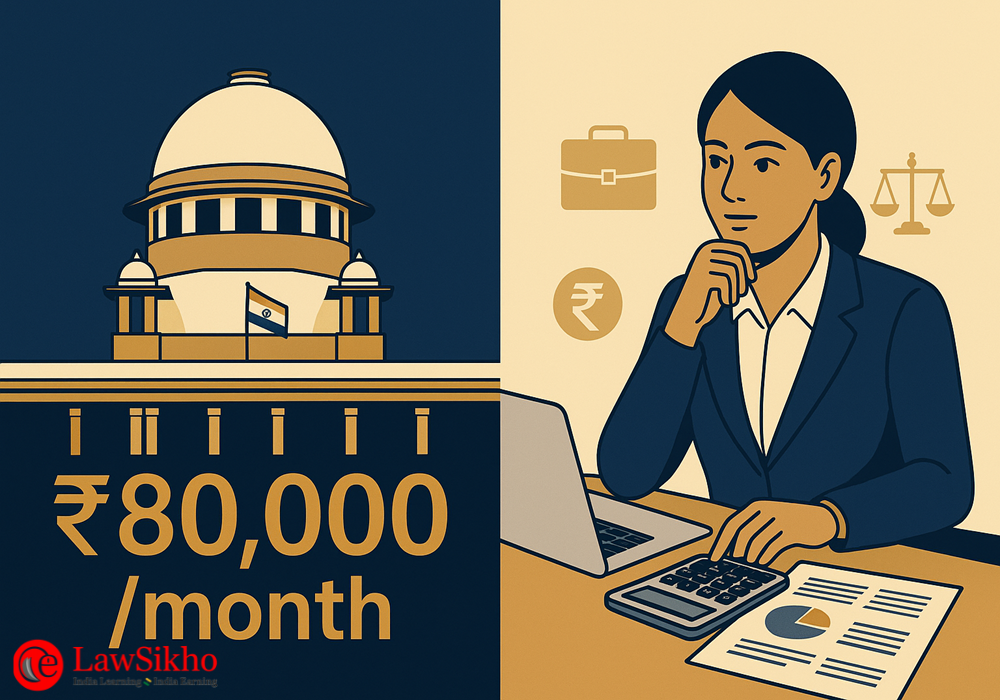

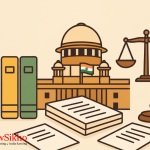
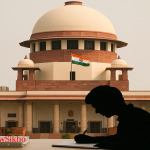


 Allow notifications
Allow notifications